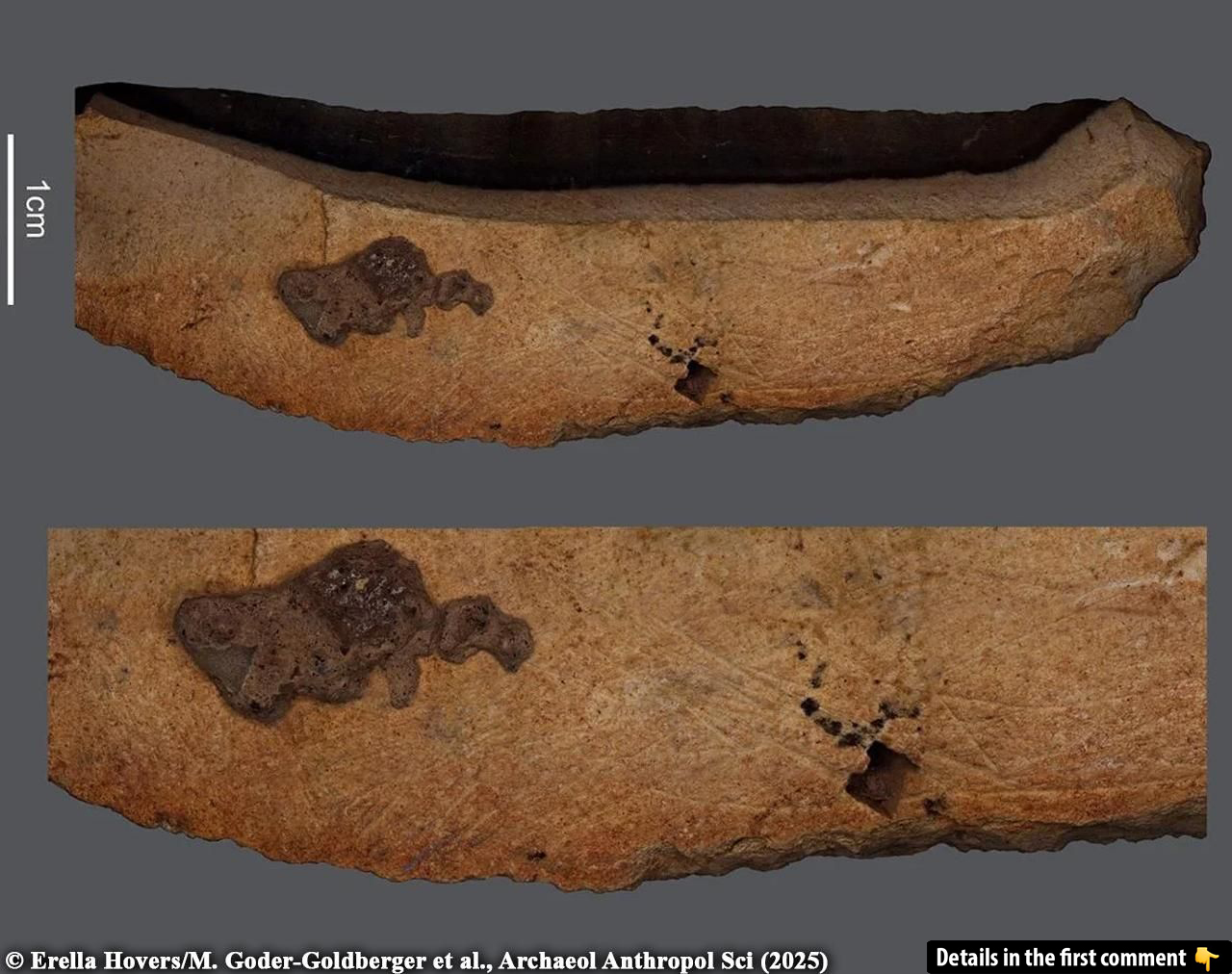A groundbreaking study has just challenged our understanding of early human cognition and symbolism. Deliberate engravings found on Middle Paleolithic stone tools from the Levant offer the first concrete evidence that early humans were capable of abstract thought much earlier than previously believed. These geometric patterns, intricately carved into ancient tools, suggest a level of cognitive sophistication previously thought to be exclusive to modern Homo sapiens. This discovery opens a new chapter in the story of human evolution, revealing a deeper layer of complexity in our ancient ancestors’ lives.
The Research Team and Methodology
The study was led by Dr. Mae Goder-Goldberger from Hebrew University and Dr. João Marreiros from the University of Algarve, in collaboration with Prof. Erella Hovers (Hebrew University) and Dr. Eduardo Paixão (University of Algarve). Together, they used cutting-edge technology to analyze stone tools from key archaeological sites in the Levant: Manot Cave, Qafzeh Cave, Quneitra, and Amud Cave. The team applied high-resolution 3D surface analysis to examine the intricacies of the engravings on these tools.
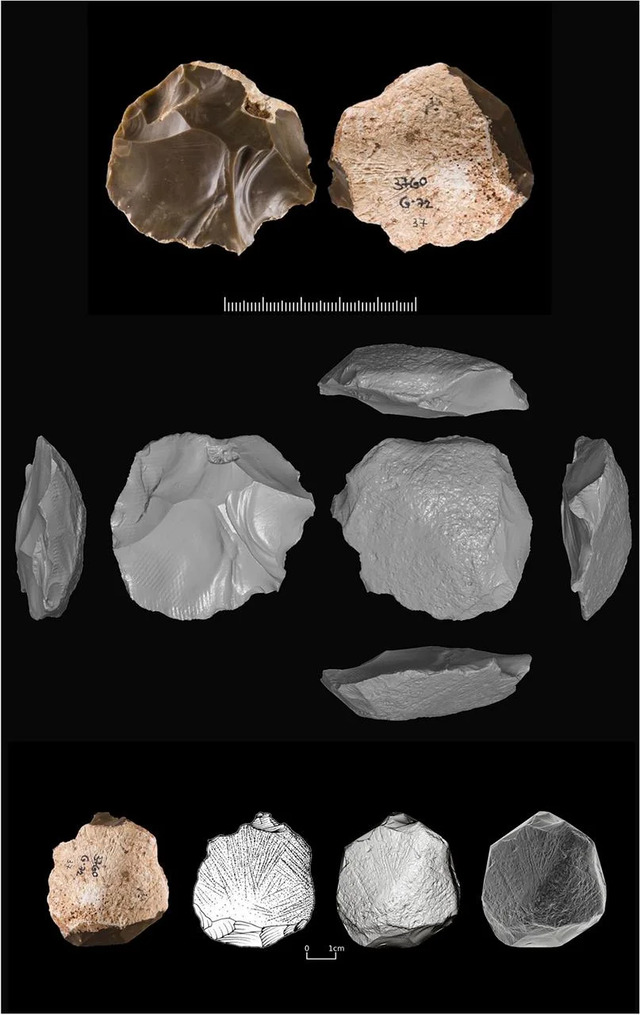
The use of 3D modeling allowed the researchers to study the surface geometry of the artifacts in unprecedented detail. This innovative technique provided a clearer picture of the tools’ markings, distinguishing between those made for functional purposes and those that showed intentional designs. By comparing the engravings across different sites, the team was able to draw conclusions about the symbolic significance of the markings, providing the first concrete evidence that some early humans may have engaged in symbolic thought.
Video
Watch Engravings on Middle Paleolithic Stone Tools Reveal Early Human Symbolic Thought in the Levant to explore this fascinating insight into early human behavior. Don’t miss it!
Archaeological Sites Examined: Key Locations in the Levant
The Levant, a region that spans parts of modern-day Israel, Palestine, Lebanon, Jordan, and Syria, is known for its pivotal role in human evolution. It served as a crucial land bridge between Africa and Eurasia, making it one of the earliest regions where humans began to settle and develop more sophisticated tools. Four key sites in this region were selected for this study due to their rich archaeological significance: Manot Cave, Qafzeh Cave, Quneitra, and Amud Cave.
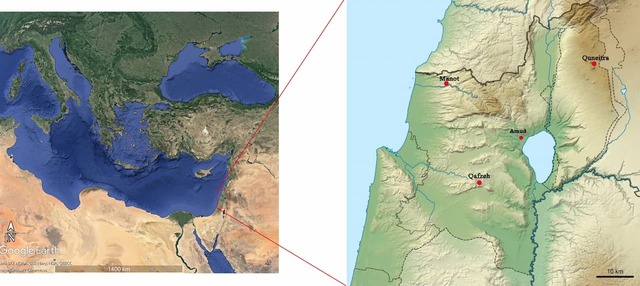
Manot Cave, in particular, has yielded some of the most important finds related to early human evolution, including evidence of Homo sapiens and Neanderthal interactions. The caves of Qafzeh and Quneitra are equally significant, offering insights into the lives of early humans and their interactions with their environment. By examining artifacts from these sites, the researchers were able to compare engravings and identify patterns that suggest a common thread of symbolic behavior across different regions and time periods.
Deliberate Engravings: Evidence of Symbolic Behavior
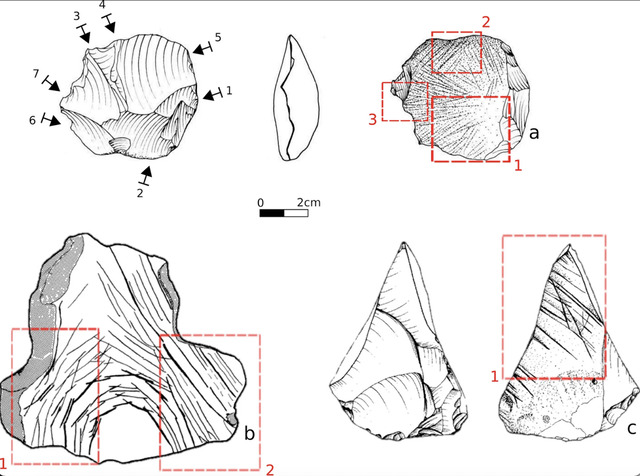
One of the most striking findings of the study is the deliberate nature of the engravings on certain stone tools. The artifacts from Manot, Qafzeh, and Quneitra exhibited clear geometric patterns, meticulously arranged to align with the natural topography of the stone surfaces. These well-defined incisions are not random or incidental; they show signs of intentional design, suggesting that the toolmakers were not merely using the tools for practical purposes but were also engaging in a form of expression.
In contrast, the artifacts from Amud Cave exhibited shallow, irregular incisions with no discernible pattern. These markings were likely the result of functional use, as the tools from Amud Cave appeared to be primarily used as abraders. This difference in the quality and intention behind the markings highlights the distinction between symbolic and functional use of tools in the Middle Paleolithic.
Dr. Mae Goder-Goldberger, one of the lead researchers, explained, “Abstract thinking is a cornerstone of human cognitive evolution. The deliberate engravings found on these artifacts highlight the capacity for symbolic expression and suggest a society with advanced conceptual abilities.” This finding supports the idea that symbolic thinking was not exclusive to modern Homo sapiens but was a characteristic of earlier human species as well.
The Significance of Geometric Patterns in Stone Tools
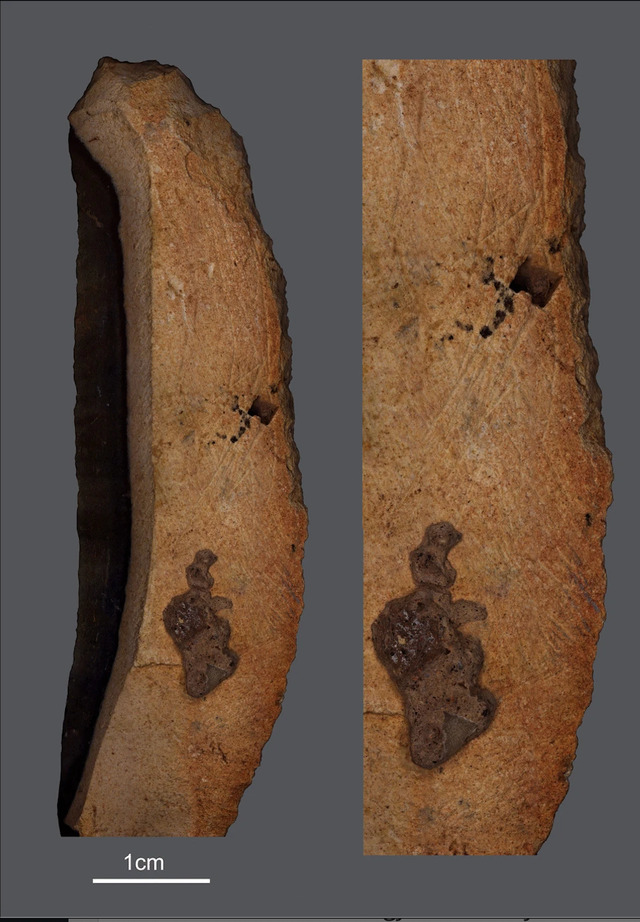
The geometric patterns found on the engraved stone tools from Manot, Qafzeh, and Quneitra are particularly significant because they suggest that early humans engaged in abstract thinking. The well-structured designs, which align with the natural surface contours of the stone, point to a level of cognitive sophistication that was previously thought to have developed only in later periods of human evolution.
These patterns are not merely decorative; they may have served a symbolic function, representing an early form of communication or social bonding. The intentional creation of such patterns indicates that early humans may have used these markings to convey abstract ideas, potentially signaling the emergence of early forms of language or cultural identity.
Dr. João Marreiros, co-author of the study, emphasized the methodological breakthrough of their research. “The methodology we employed not only highlights the intentional nature of these engravings but also provides, for the first time, a comparative framework for studying similar artifacts,” he said. This comparative framework is crucial for understanding the broader implications of the findings and for enriching our understanding of Middle Paleolithic societies.
Differences Between Sites: Intentional vs. Functional Use of Tools
While the artifacts from Manot, Qafzeh, and Quneitra exhibited deliberate geometric patterns, the artifacts from Amud Cave were markedly different. The markings on the Amud tools were shallow and irregular, lacking the defined patterns seen in the other sites. These differences suggest that the tools from Amud Cave were primarily used for functional purposes, such as abrasion or tool shaping, rather than for symbolic expression.
The contrast between the artifacts from different sites highlights the varied ways in which early humans interacted with their environment and used tools. The intentional engravings found in some sites suggest that certain groups may have had more advanced cognitive and symbolic capabilities, while others focused more on the utilitarian aspects of tool use. This diversity in tool use and symbolic behavior suggests that early human societies were complex and multifaceted, with different groups engaging in varying forms of cognitive and cultural expression.

Cognitive Evolution and Early Human Societies
The discovery of intentional engravings on Middle Paleolithic stone tools provides important insights into the cognitive evolution of early humans. The ability to create geometric patterns and engage in abstract thought is a key milestone in the development of human intelligence. These findings suggest that symbolic behavior, once thought to be exclusive to modern Homo sapiens, may have emerged much earlier in human history.
The capacity for symbolic thought is closely linked to the development of language, social organization, and cultural practices. The engravings on the stone tools from the Levant may have served as early forms of communication, social identity markers, or even a way to convey abstract concepts. These early forms of symbolic expression could have played a crucial role in the evolution of human societies, fostering cooperation, social bonding, and cultural development.
Cultural Implications: Shared Traditions and Symbolic Communication
The similarities in the geometric patterns found across different archaeological sites suggest that early humans in the Levant may have shared cultural traditions related to symbolic representation. The consistency in the engravings, despite differences in geographical location and time period, points to a common cultural practice that may have transcended individual groups.
This finding challenges the notion that symbolic behavior emerged only in isolated pockets of early human populations. Instead, it suggests that early humans in the Levant may have engaged in shared cultural practices that facilitated communication and social interaction. The deliberate engravings on these stone tools may have been part of a broader cultural tradition that was passed down through generations, reflecting the deep cognitive and cultural sophistication of early human societies.
Video
Watch Stone Tools in the Paleolithic to discover how early humans crafted and used tools during the Stone Age. Don’t miss this insightful exploration!
Conclusion: Rewriting the History of Symbolic Thought
The discovery of deliberate engravings on Middle Paleolithic stone tools is a groundbreaking development in our understanding of early human cognition and symbolic thought. These findings challenge previous assumptions about the emergence of abstract thinking, suggesting that symbolic expression may have developed much earlier than previously thought. By examining the engravings found on artifacts from key Levantine sites, researchers have uncovered a rich tapestry of cognitive and cultural behavior that sheds new light on the complexity of early human societies.
As we continue to explore the cognitive and cultural evolution of our ancestors, studies like this one provide invaluable insights into the origins of symbolic thought, communication, and social organization. The deliberate engravings on these stone tools offer a glimpse into the minds of early humans, revealing their capacity for creativity, abstract thinking, and cultural expression. This discovery not only rewrites the history of symbolic thought but also deepens our understanding of the intellectual and cultural foundations of human evolution.
